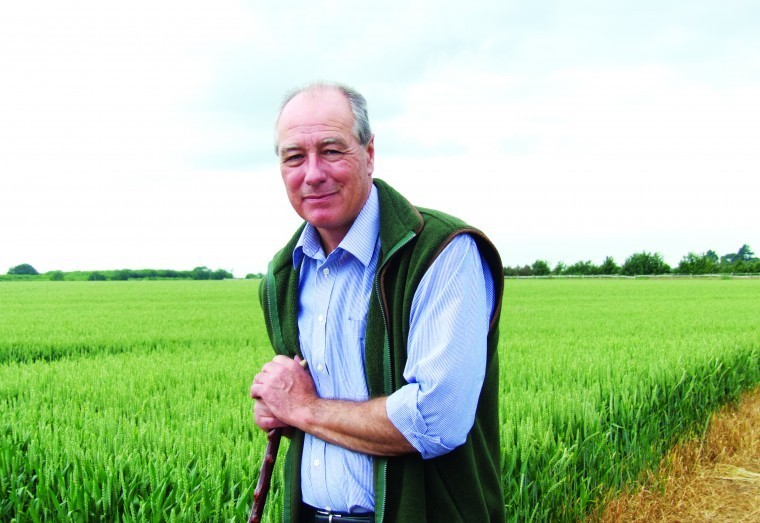Well, we had an Indian summer of sorts to try and sort out next year’s crops. Unfortunately with the odd 13 millimetres of rain to slow progress and periodic winds off the North Sea bringing drizzle and rain to north Kent with little drying time, it has not been easy. That said we are all in a better place drilling wise than we had any right to expect a month ago.
Every time we have managed to get back drilling we have taken the best land and drilled it as fast as we can and now we are left with the last 300 acres which is all heavy clay and will be a real challenge. If we get to the end of October without progress then I think it will be time to draw a line and move to spring cropping, a triumph of pragmatism over optimism. One very noticeable and obvious result of the 200mm of rain from mid August to mid September is that the soil has never really dried properly since. The top dries just enough to drill but any rain and it is nearly a week’s break waiting for it to drain and dry again.
All of the oilseed we drilled has made it so far, with the later crops needing careful slug control. Where we have used bio cake the crops are growing strongly. But for the rest even with an autumn nitrogen dressing they are slower mainly due to the heavy rain lowering soil temperatures and the cold wind from the north east also taking a toll.
Drill timings are showing a noticeable effect and it would appear that we are back to a year when earlier sown oilseed crops look superior going into winter which is likely to help with pigeons and be a determining factor in yield next harvest. Pigeons are a menace already as they have moved smartly from gleaning grain from the previous cereal crop stubble onto emerging oilseed rape plants.
That has been a problem that has required gas guns already this autumn. I do so look forward to the discussion with urban neighbours as to the merits of different types of bird scarers, as these days they can all be instant experts on the newest most effective type simply by clicking on to Google and reading the glowing literature that is designed to market the latest device. I remain a traditionalist with something that makes a loud bang backed up by real shooting killing as many pigeons as possible. That is not quite how the residents of various villages and towns across north Kent see it I am afraid.
As a summary the crops look well with good broadleaved control from pre emergence sprays and later graminicides taking out cereal volunteers. Disease levels are generally low, with a few exceptions and the fungicide can wait until we get to low enough soil temperatures to apply Kerb.
Wheat crops range from recently sown to strongly emerged. We did tend to drill first and second wheat without much thought to sequence as we drilled whatever farm we could. So we do face crops that have had preventative aphid seed treatments emerging at the same time as second wheat with Lattitude dressing but no Deter treatment. We have managed to spray all crops with a residual herbicide but have found follow up applications with Avadex on serious black grass fields to be a challenge, one which we are not meeting. We have struggled with rolling post drilling but made fair progress and slug control has been much easier where we have managed to roll.
Anything following beans has not required any slug pellets as long as we got it rolled. Anything following oilseed has needed routine treatment rolled or not and further patch treatments. After the effects of barley yellow dwarf virus we have seen over the last couple of years we are making an effort to get aphid treatments onto all emerging second wheat which is yet another challenge this year. Again overall, I am fairly satisfied with where we are and what we have achieved in a very difficult autumn.
Winter beans are going in the ground as they are on better soils and again if something drills somewhere then it is better than standing idle. We are using a Claydon tine drill to get the depth and while it seems a luxury to have a drill just for beans we are drilling more than we used to and making a better job is essential. At least you can get a good depth of drilling to allow for good seed cover for residual applications and if we time it right can add glyphosphate just before the beans emerge to produce a clean seed bed. Not only that but the rooks have a lot more trouble pulling the beans up.
Finally one of the noticeable things while we were combining was that anywhere we had blocks of land hedged, fenced and gated, we had far more brown hares than where fields had open road boundaries. We have never been short of hares on the North Downs and I have no view as to how many is enough but they are fairly iconic and the reason they are lacking on the accessible fields is coursing by lurchers done increasingly at night. If you drive across the Downs at the moment nearly every field has vehicle tracks across it with hare carcases lying where the dogs have caught them. It is the worst I have ever seen. Beyond putting more fences up and planting hedges, digging field boundary ditches seems to be the only way to prevent this illegal activity. Certainly the police do not have the resource and the courts seem to be powerless to levy preventive sentences. I certainly will not be alone in putting in dry ditches although I suspect they will be filled with fly tipped rubbish.




